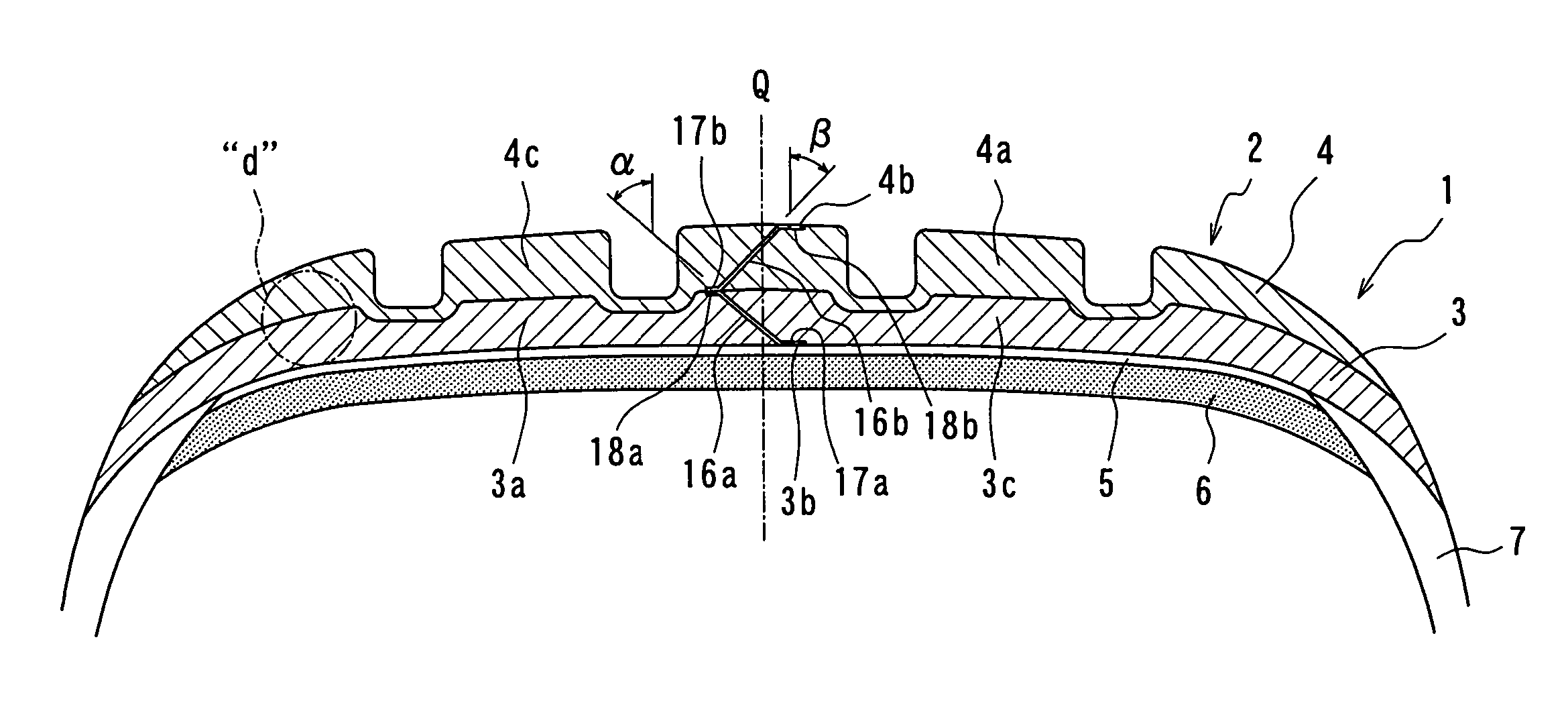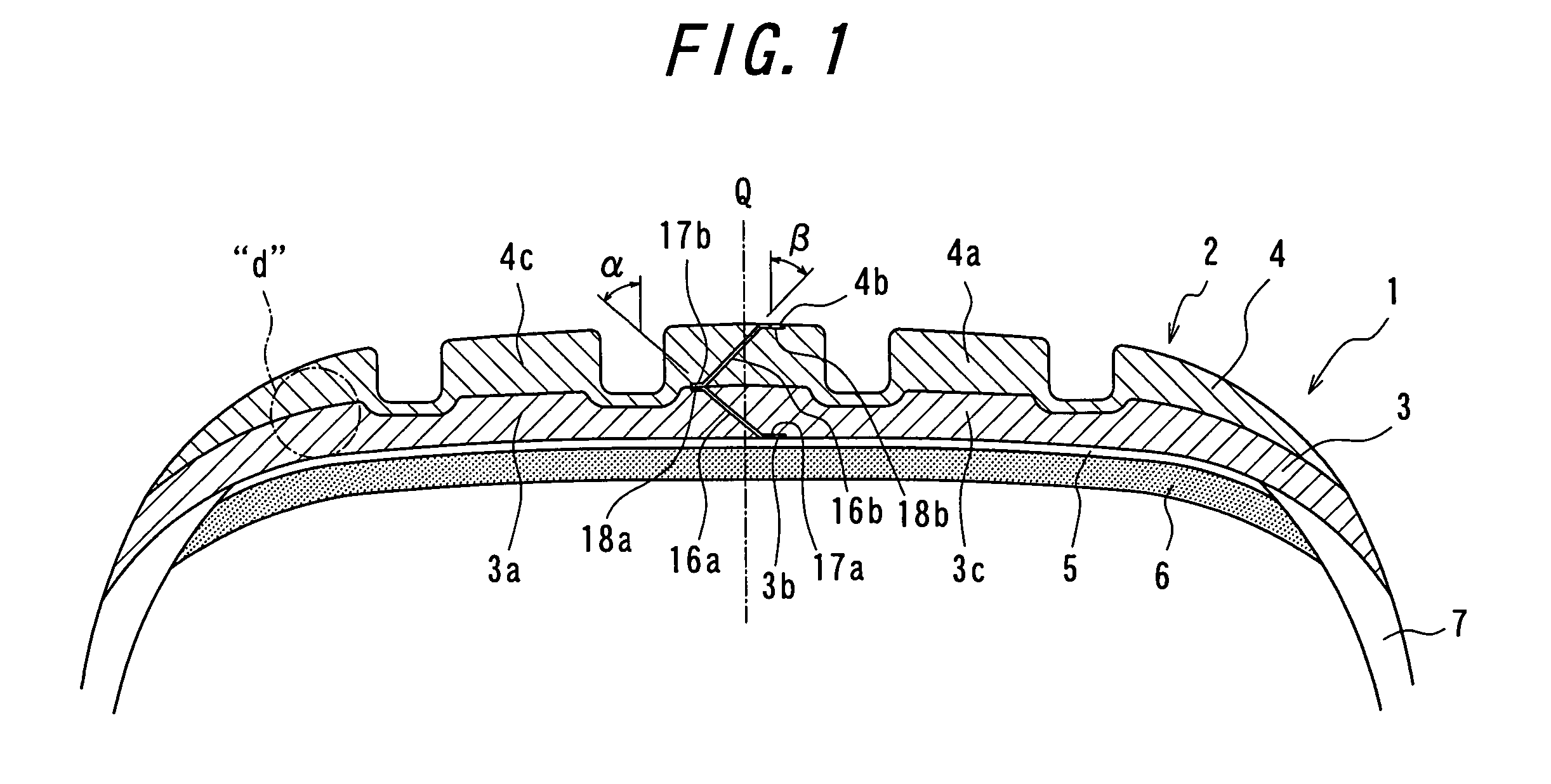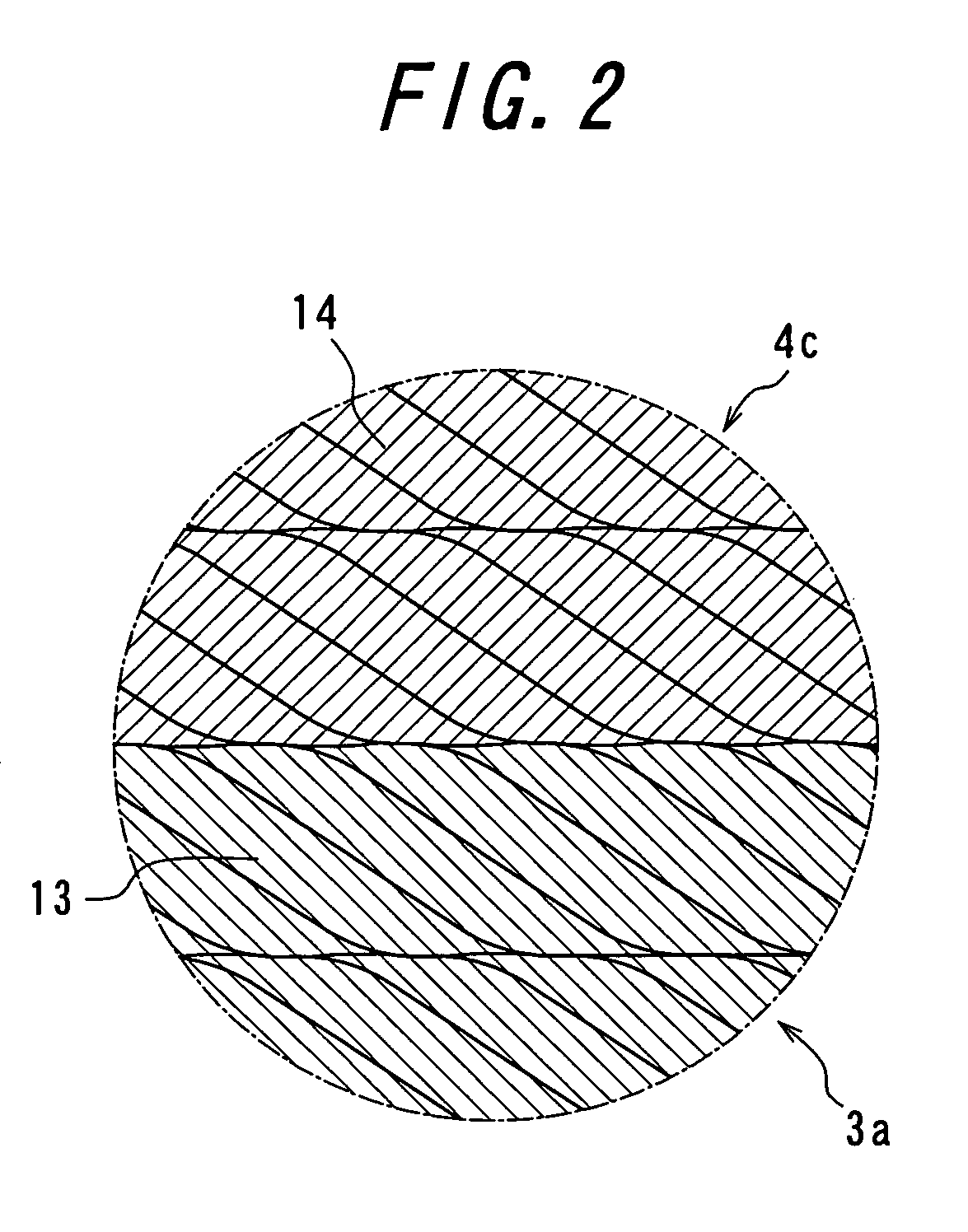Tire and tire producing method
a technology of tire and extruder, which is applied in the field of tires, can solve the problems of deteriorating tire uniformity, hardly discharged static electricity generated in a vehicle through the tire toward the road surface, and the orifice set in the extruder once cannot be easily exchanged with another orifice, so as to achieve the effect of improving tire uniformity and low cos
- Summary
- Abstract
- Description
- Claims
- Application Information
AI Technical Summary
Benefits of technology
Problems solved by technology
Method used
Image
Examples
Embodiment Construction
[0038]An embodiment of the invention will be described with reference to FIGS. 1-6. FIG. 1 is a meridianal section view showing a tread portion of a tire according to an embodiment of the invention, and FIG. 2 is a section view showing a detail of a portion “d” in FIG. 1. The tire 1 comprises a belt 6, a tread under cushion 5 arranged on an outer periphery 9 of the belt 6 and sidewall portions 7 disposed on both sides thereof in the widthwise direction, in which a base tread layer 3 and a cap tread layer 4 disposed outside thereof are arranged outward in the radial direction thereof as a tread layer constituting a tread 2. The base tread layer 3 comprises a first tread rubber portion 3a and a second tread rubber portion 3c having a low electric conduction, and an electrically conductive band 3b having a high electric conduction and arranged in a middle portion of the tread rubber in a widthwise direction of the tire, in which each of the first and second tread rubber portions 3a, 3c...
PUM
| Property | Measurement | Unit |
|---|---|---|
| inclination angle | aaaaa | aaaaa |
| inclination angle | aaaaa | aaaaa |
| width | aaaaa | aaaaa |
Abstract
Description
Claims
Application Information
 Login to View More
Login to View More - R&D
- Intellectual Property
- Life Sciences
- Materials
- Tech Scout
- Unparalleled Data Quality
- Higher Quality Content
- 60% Fewer Hallucinations
Browse by: Latest US Patents, China's latest patents, Technical Efficacy Thesaurus, Application Domain, Technology Topic, Popular Technical Reports.
© 2025 PatSnap. All rights reserved.Legal|Privacy policy|Modern Slavery Act Transparency Statement|Sitemap|About US| Contact US: help@patsnap.com



